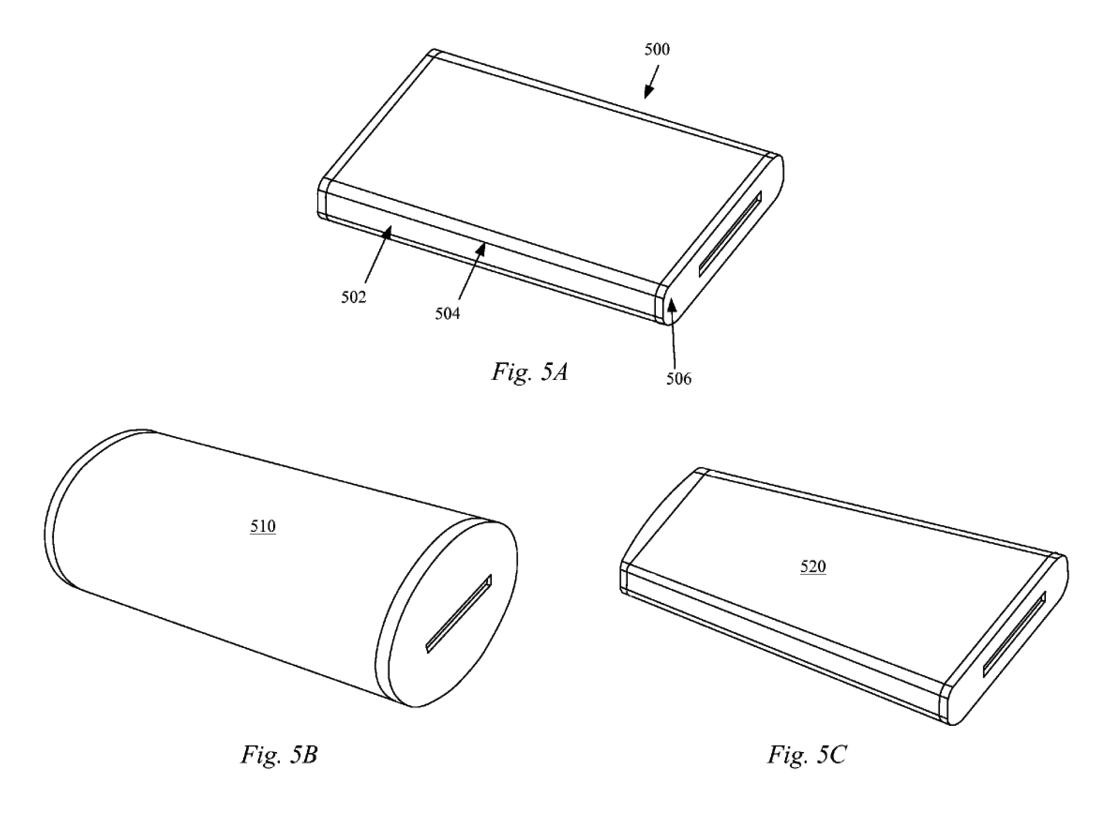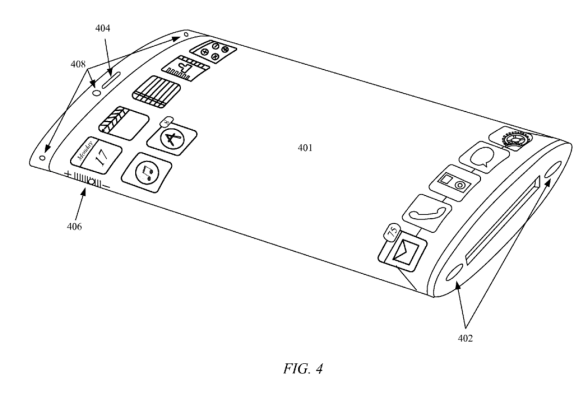Apple has a new patent filing just published by the USPTO today, first spotted by AppleInsider, which details a wraparound-style AMOLED display that could make it possible to create an iPhone that’s almost entirely screen, with touch gestures and virtual buttons replacing physical ones completely. The patent describes designs that could have a seamless, continuous surface resembling the fourth generation iPod nano, as well as other shapes closer to the current iPhone, but with every surface a touch-sensitive glass display.
The patent is a fairly comprehensive one, and even mentions built-in facial recognition as well as a method of layering flexible, see-through displays on top of one another in order to produce different visual effects, including the appearance of 3D. The glass used to encase the display is described as either seamless, or featuring small design elements to hide where one piece joins another. One major advantage is that glass is relatively radio transparent, which is why the current generation iPhone 5 has top and bottom glass “window” panels on the backside of its casing, and another, says Apple in the filing, is the aesthetic advantage.
Apple suggests a number of different device designs representing different geometric shapes that could be used with an all-encompassing external glass display, but even more interesting, in some it talks about removable end caps that could allow more than one device to be joined together. Like Voltron, when combined these iPhones or iOS mobile devices would become greater than the sum of their parts.
 Another neat trick is the way in which the proposed device would recognize what touch to treat as important, and which to ignore, since the entire phone is essentially one big touchscreen. Apple describes a way of detecting how a user is actually handling the device to solve that problem, using on-board cameras and facial recognition to figure out where to display content, and where to register touch.
Another neat trick is the way in which the proposed device would recognize what touch to treat as important, and which to ignore, since the entire phone is essentially one big touchscreen. Apple describes a way of detecting how a user is actually handling the device to solve that problem, using on-board cameras and facial recognition to figure out where to display content, and where to register touch.
The final element of the patent is a version that contains layered, transparent displays that can each show different content, or layers of a single image to achieve 3D effects. It could also be used to place a HUD or additional information on top of another image, essentially building a second-screen or augmented reality experience into a single device.
This is one of the more exciting Apple patents that has surfaced lately, as it demonstrates essentially a completely re-imagined next-generation iOS smartphone. But the technology is probably still a ways off from being economically practical, and the battery demands of a completely wraparound display would also likely be astronomical. So while I wouldn’t expect this in iPhone 6 (or even 7), it’s a good look at how the company is thinking about innovation behind the scenes.
